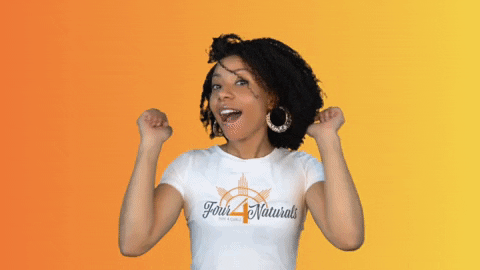Steph W. from SEOPressor


...help you check your website and tell you exactly how to rank higher?


88
score %
SEO Score

Found us from search engine?
We rank high, you can too.
SEOPressor helps you to optimize your on-page SEO for higher & improved search ranking.
By jiathong on October 20, 2020

You have no doubt heard about search engine optimization as a content creator, website owner, or content manager. SEO, as it is abbreviated, encompasses all the tactics employed to guarantee a website is at the highest rank on search engines. This means the articles on a site will appear on the front pages of search engines like Yahoo, Bing, and Google when someone types a query that reflects the keywords used in them.
A high rank on search engines means high traffic for the website in question and higher visibility of the articles a content creator generates.
For business owners and content managers, high online traffic means increased revenue because more than 90% of shoppers are now found online. For content creators, the high visibility of your articles means gaining a competitive edge and becoming the leading solution for people who want to push their products online.
Is SEO the same as copywriting? No, absolutely no.

SEO is more than just copywriting.
The primary objective of content writing around an SEO keyword is to generate organic traffic to online marketing platforms via search engines. Copywriting, on the other hand, primarily focuses on changing online traffic into sales and leads.
The following are some tactics to help you generate search-engine-optimized articles for content marketing or discern the best articles for the same as a business owner or content manager.
You should use website content that is centered on user experience rather than the generation of revenue.

This has seen Google, the largest search engine, conduct several major updates to their search algorithms, including an update called Panda in 2011, the RankBrain in 2015, and the ‘’Fred’’ in 2017 to ascertain websites’ user experiences. The ‘’Fred’’ update, for instance, saw over 100 websites lose 50-90% of their traffic secondary to penalties for generating low-quality content.
Here’s a quick recap on the Google algorithm updates through the years.

According to Google, any and all changes in their algorithm aims at achieving one thing, and that is presenting users of their search engine with the best results that answers their question.
The definition of best results for Google includes a great user experience, like a smooth website that loads quickly, information that is presented in an easy to digested way and more.
An example, if your website has multiple pop-ups, video advertisements with the sound automatically turned on, or banner ads that slow down the loading of the web page, then you’re not providing a good experience to the users.
Getting exceptional SEO content writers rather than simple wordsmiths is essential for your website since it can make or break your ranking, even if they’re writing on the same content.
The content writers, in this case, should focus on maximizing your clients’ experiences on your site. This can be achieved through the use of explainer images, citing of references in articles, a writer biography that explains who wrote the piece and what experiences he or she has in the topic.
Maximizing your odds of getting hired means focusing on maximizing your content’s user experience. When you do this, people will spend more time perusing your content, and this boosts its search engine position.
A Backlinko study that analyzed about 100,000 sites concluded that content with images, for example, outperformed purely text-based content since they enhanced user experience.
Knowing your header tags, and creating a set of closely related keywords – also known as LSI keywords – to be sprinkled naturally in your writing is also very important. Remember, content created with SEO in mind is created to answer questions.
The bounce rate can be one of the data that Google is looking at that can impact your search engine position (there are few reveals from Google about the exact data they are looking at, but most of the SEO industry agree that some form of bounce rate is considered for rankings, for the ease of explanation, we’ll be treating it as bounce rate.)
If people are leaving your site within a short time, this means your on-page SEO is less than satisfactory, and they see little need to keep perusing your articles. Getting people to stay on your site brings you across as a credible site to search engines and boosts your rank.
Other than SEO, let’s be frank, you poured time and heart into creating your content, it’s heartbreaking that people came into your blog post and click on the x button in less than a minute.
Here is an overview of other on-page SEO elements that you should be aware of.

When analyzing a writer’s on-page SEO, pay attention to his/her density of SEO keywords and how well they flow with the article.
They should also have a good understanding of the searcher’s intent behind the keyword targeted, are they looking to do a purchase? Or are they simply looking for information?
A good SEO writer should also know how to link the different articles on your site together, a practice known as internal linking. Internal linking demonstrates to search engines that your site has an in-depth knowledge of the issues it addresses and eases site navigation.
To showcase your on-page SEO skills, segment your article with H1, H2, and H3 title tags and include keywords in the headers. These make an article easy to read and easy for search engine bots to index while maximizing your keyword density.
You should also use tools like the LSI graph to pick the most valuable group of keywords to use for a specific industry.
Understand the difference between short-tail and long-tail keyword, which one to target and how targeting different types of keywords will affect how your content is constructed.
There exist many tools, both free and paid to help in different aspects of SEO, most notably keyword research, on-page SEO and rank tracking. We will take this chance to introduce you to a few tools that can fit in nicely to your SEO content creation process.
This is a great tool that we the SEOPressor team personally use for all of our keyword research efforts.
LSI stands for latent semantic index, but nowadays it is used as an umbrella term to mean closely related keywords that can help Google understand what exactly your content is about.
LSIGraoh is a keyword generator that will give you the keywords similar to the one that is related to the main one you want to use. With this information, you can set yourself apart from your competitors by picking the best-performing yet underused options for your industry.

Even if you are perfect at keyword use, your articles might not do much for a site’s SEO without on-page SEO to create a good user experience and help search engines to understand what your page is about.
To ensure your on-page SEO is top-notch, you can use the many online tools meant for the same, a free tool that you can use is GDoc SEO Assistant.
This works as a Google Document plugin that will show you overall contents scores, keyword data, related keywords, and other SEOs suggestions that can guide you in content optimized for search engines.
The elements that guide SEO change to reflect technology changes and consumer needs. What works today might thus not work in a few months. To keep abreast of any changes, and churn the best articles or evaluate the articles you get, get the right online sites for continuous learning of what works for SEO.
With these tidbits, you are in a good position as a content manager or business owner to know the rules you can set for your content creators to follow. These rules will be centered on the best way to incorporate SEO keywords and other strategies into your website’s articles to guarantee a high search engine rank. This way, you are sure to see an increase in the profits from online sales and more foot traffic into your physical stores. Also, you can effectively boost content marketing with SEO, giving your business an additional edge in the competitive online marketplace.
For content creators, you now know how best to market your skills to content managers and business owners. You, for example, can choose to write on GDOC SEO Assistant rather than plain word documents. This tool will automatically highlight any mistakes you are making in your articles and maximize your odds of generating a search engine optimized article.
Becoming a good SEO writer takes time, as does getting your website to the top of search engines. As such, the tactics you employ to optimize your business website or articles for search engines will not give you an instant result. Provided the tactics you employ are professionally guided and customized to meet your industry’s needs, however, you are sure to get to the top of search engines and maintain the position.
Updated: 28 December 2025


Save thousands of dollars (it’s 100x cheaper)

Zero risk of Google penalty (it’s Google-approved)

Boost your rankings (proven by case studies)
Rank High With This Link Strategy
Precise, Simplified, Fast Internal Linking.
